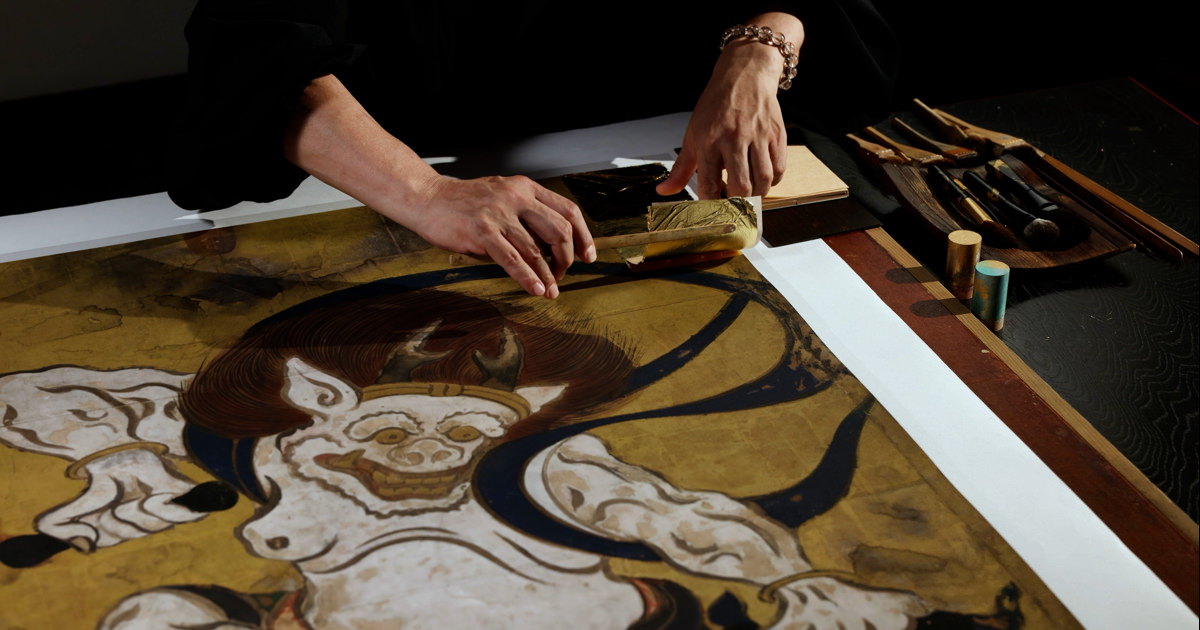Wind God and Thunder God / Flowering Plants of Summer and Autumn
Ogata Korin/Sakai Hoitsu

Wind God and Thunder God / Flowering Plants of Summer and Autumn
High-resolution facsimiles
- Material
- printed, gold on washi paper
printed, silver on washi paper - Period of creation
- The Joint-research Project with CPCP 2019
- Collection
- Tokyo National Museum
Original
- Cultural property designation
- Important Cultural Property
- Artist
- Ogata Korin
Sakai Hoitsu - Historical era
- Edo (18th century)
Edo (19th century) - Material
- ink, color, and gold on washi paper
ink, color, and silver on washi paper - Medium
- pair of two-fold screens
- Size
- Each Screen H168.2 × W186.6 cm
- Collection
- Tokyo National Museum
Description
This piece was originally part of a two-sided byoubu-e (painting on folding screens): Kourin made a replica of Soutatsu's Fuujin Raijin-zu (Wind and Thunder Gods screen) on one side, Houitsu painted this piece on the backside, which became his best-known work. It was a monumental two-sided byoubu-e that symbolized the Rinpa tradition, but recently reformed into two separate pairs of screens in order to protect them from damage. On the backside of the Raijin-zu, he painted the summer plants revived by a sudden shower and the swollen flow of a river, and for the Fuujin-zu, the autumn plants swaying and the red leaves of ivy blown in a strong wind.
Houitsu (1761–1828) was captivated by Kourin's paintings after taking a number of painting styles of different schools and established the Rin-pa tradition in Edo and made it flourish there. Nonetheless, the elegant and refined taste common to poetry, which is another field of art he practiced, is dominant in his style. For example, tarashikomi, a painting technique that is part of the Rinpa tradition, is mainly used in his paintings to paint plants and flowers with poetic feelings. While this is an elegant painting of charming plants and flowers painted on a silver undercoat, it is also worth noting that he also tries to create a vivid color-effect by not shading the colors. Hoitsu aimed for the natural integration of poetic emotion and decorative technique. This piece can be said to present the high point of his paintings. The signature-seal "by Houitsu" and a round seal with red letters "Bunsen" (another name of Houitsu) are found on both panels.
— Cited from Colbase





